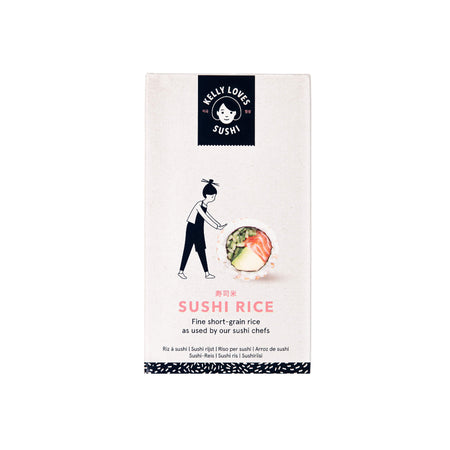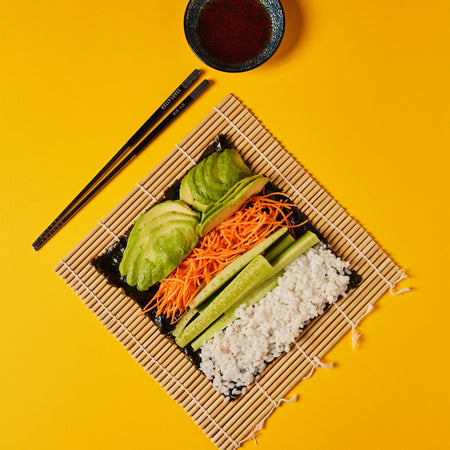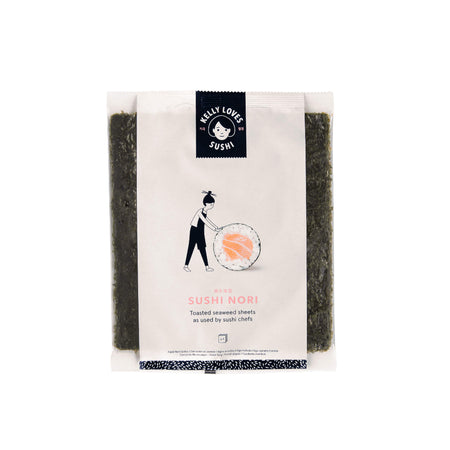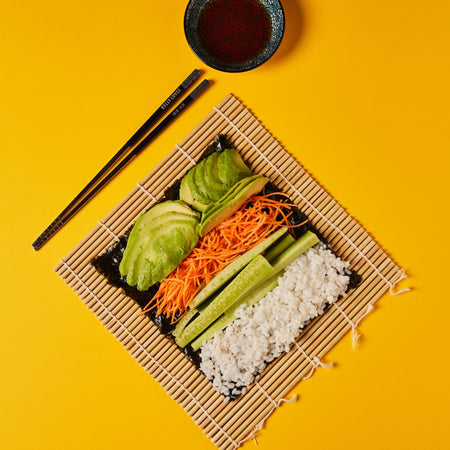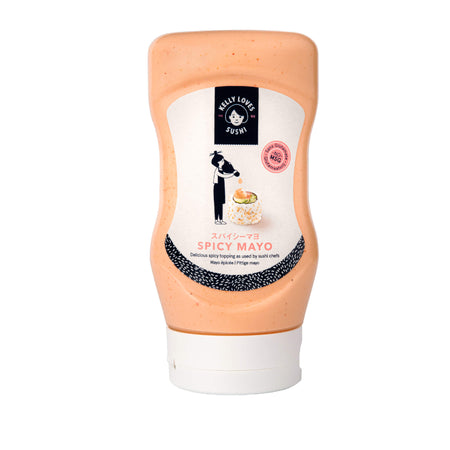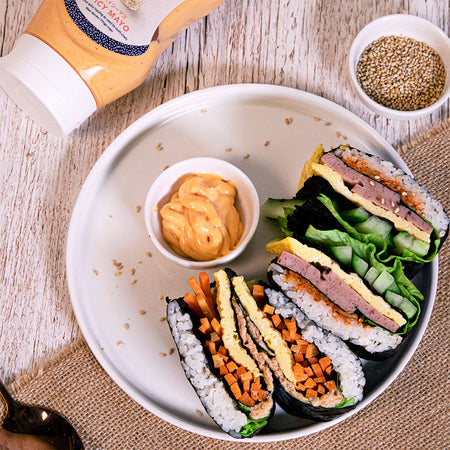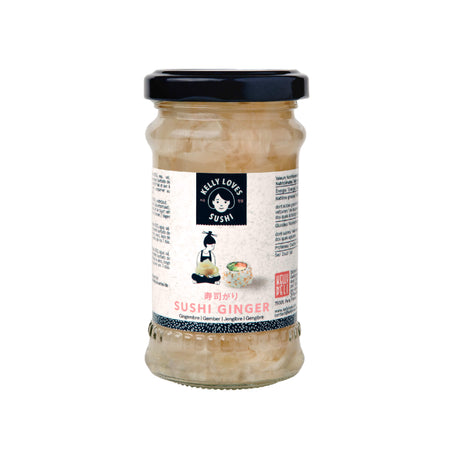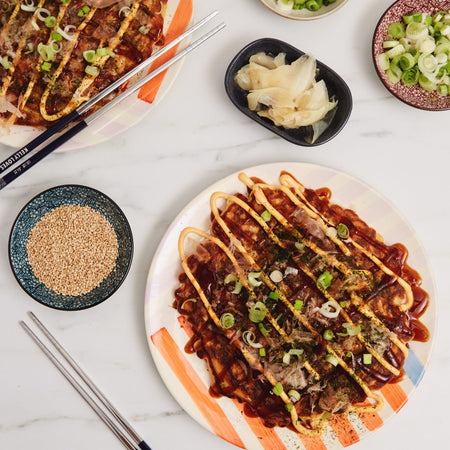Types of kimchi: A guide
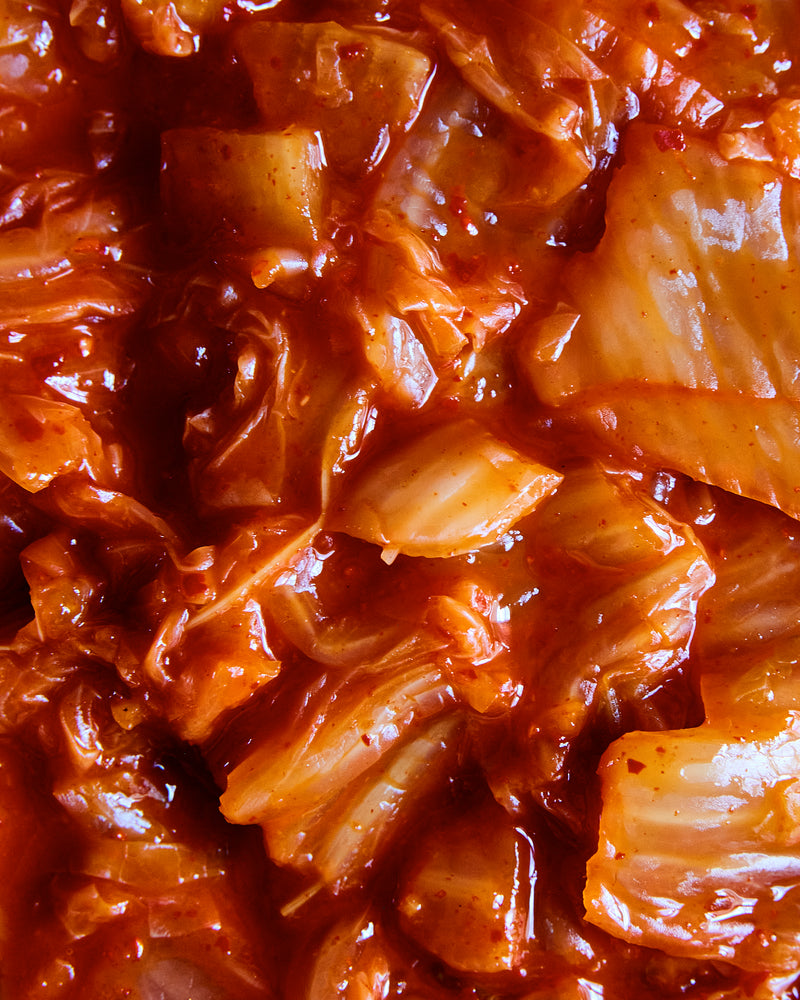
‘Say cheese!’ or should we say: ‘kimchiiii!’ When Koreans have their photo taken, saying ‘kimchiiii’ to smile is a thing. Another fun fact: Korean scientists spent millions of dollars and many years creating kimchi that was edible in space so South Korea's first astronaut didn't have to live a single day without it. Yes, if Korea had a national dish it would certainly be kimchi — healthy and enticingly succulent. Is it worth the hype? We think so! Kimchi is served with most meals in Korea so it’s probably not surprising that there are hundreds of different types of kimchi — so many that you need a guide! Here you go.
Types of kimchi
Baechu kimchi
When people refer to kimchi, they’ll be talking about baechu kimchi. Baechu kimchi is the signature chilli-red covered napa cabbage. This is the kimchi you’ll see in trendy mason jars on foodie’s Instagram grids, in photos of kimchi-making festivals with the long lines of Koreans wearing plastic gloves covered in gochugaru mix, and the kimchi you’ll see served as a side dish without request in Korean restaurants. Baechu kimchi is utterly addictive, but can be time-consuming to make (unless you’re using our quick and easy kimchi recipe - or for the utmost convenience - our authentic Kelly Loves vegan kimchi sachet!) It’s usually made from napa cabbage, spring onions, radish, carrot, sugar, gochugaru, rice flour, salted shrimp and fish sauce. This kimchi usually ferments for around two weeks.
Kkakdugi
Making baechu kimchi can be off-putting because it’s a slow process (when we now live in ‘instant culture’). Kkakdugi, or radish kimchi, is quicker than other types of kimchi as you skip the soaking in salt water. All you have to do is chop the radishes into cubes and rub them with salt and gochugaru. The radishes you use to make this particular kimchi are daikon radish also known as mooli radish — they are crunchy and a little sweet. Koreans prefer to make kkakdugi in late autumn when the radishes are at their best (sweeter and firmer). Kkakdugi is eaten with any dish, but particularly Korean soup dishes.
Oi sobagi kimchi
Oi sobagi (pronounced as oh-ee so-beh-gee), kimchi stuffed cucumbers, is a popular dish during the hot summer months. Cucumber is so cool and refreshing to eat, the perfect addition to your salad buffet at a BBQ. Korean cucumbers are usually used, but cucumbers from your local British supermarket are fine too. The cucumbers are soaked in salt water and then four incisions are made to create pockets. Then a mix of gochugaru, Korean salted shrimp and garlic chives are stuffed inside the cucumber. If you don’t have time for incisions, you can simply mix these ingredients with cut-up cucumber. Oi sobagi isn’t so good after a long fermentation period — some say it’s best eaten fresh.
Pa kimchi
Pa kimchi, or spring onion kimchi, is so easy to make! Korean spring onions (called jjokpa) are in season during the spring, so this dish is usually made in the spring months. Jjokpa are very thin with tiny bulbs compared to the spring onions we are used to seeing in British supermarkets. The spring onions are rubbed in the usual mix of: gochugaru, garlic, ginger, sugar, fish sauce and sometimes dried squid (mareun ojingeo). Then the stems are tied together for easy storage. Pa kimchi can be eaten immediately or left to ferment.
Baek kimchi
Baek kimchi, which translates to ‘white kimchi,’ is white in colour because it’s made from napa cabbage and is chilli-free, standing out amongst all the other vibrant red kimchi. Baek kimchi is perfect for the summer months as it’s refreshing. It’s also good for children or elders who prefer to eat kimchi without spice. Ingredients like pears give the baek kimchi a fruity tang when fermented. Jujubes (dates) and chestnuts are also sometimes added for a sweet treat and to make it more flavoursome without the gochugaru.
Nabak kimchi
Kimchi is most recognisable from the red chilli mix, liberally slathered and massaged into the cabbage leaves. So if you saw nabak kimchi for the first time you could be forgiven for thinking it wasn't kimchi at all! But nabak kimchi is a ‘mul kimchi’ also known as water kimchi. The fermented vegetables are sliced into small squares and they float in a watery broth. There’s also no fish sauce and no Korean salted shrimp added. The spicy pepper is strained in water and then poured over the vegetables and pear. So the watered-down spice lacks that spicy kick, but it adds colour to the dish. Nabak kimchi is traditionally served with Korean New Year food such as tteokguk (rice cake soup) during Seollal celebrations.
Dongchimi
Dongchimi is time-consuming to make as it was designed to last throughout the winter months. It’s another water kimchi made from Korean radish and is often eaten during the winter. The radishes are salted and soaked over several days. It’s made at the start of the winter and then it’s thought that the radish kimchi gets better and better until the winter solstice (Dongji). It’s eaten in naengmyeon (a cold noodle dish) or red bean porridge (which is thought to aid digestion). The taste of dongchimi can be slightly bitter due to the radishes, yet has a touch of fruitiness from the pears and apples.
Gat kimchi
Gat kimchi is made from Jeolla Do mustard. This is a wild mustard leaf similar to kale in texture, named after the Jeolla Do province in Korea. The leaves are a little bitter to taste and so this kimchi goes well with stew or meat. To prepare the kimchi, the mustard leaves are soaked in salt water and then rice flour, fish sauce, Korean salted shrimps and gochugaru are mixed along with spring onions and carrots. The kimchi is then left to ferment.
Chonggak kimchi
Chonggak kimchi includes a radish called chonggak or chonggakmu. They might seem unusual looking if you haven’t seen one before! They are often called ponytail radishes as they have a shape like a ponytail and top knot. Chonggak kimchi stays crunchy even after fermenting for a week. Similar to many other kimchi processes, after soaking in salt water, the chonggak is coated in a gochugaru mix and left to ferment.
Geotjeori kimchi
Geotjeori or baechu geotjeori is simply baechu kimchi without any fermentation! It’s also known as fresh kimchi. It doesn't have the fizziness of baechu kimchi, but it’s perfect to eat as a salad or in a pulled pork burger during the hot summer months. However, fermentation adds a sweet taste, so without it, sugar or Korean rice syrup are added instead. And as the fermentation process softens the cabbage, it is advisable to choose the most tender leaves when making geotjeori kimchi.
Bossam Kimchi
Bossam kimchi comes from Gaeseong in Korea and is made with Gaeseong cabbage leaves. The filling is the usual gochugaru, fish sauce, and Korean salted shrimp. In addition to the cabbage, more luxurious ingredients are used when compared to other kimchi — things like jujubes dates, pine nuts and seafood (oysters and baby octopus) which are common ingredients for the area. Plus other flavoursome ingredients like: ginseng, watercress, fruits and nuts. To serve up all these delicious ingredients, the filling is placed on a single cabbage leaf which is then wrapped up into a bundle using the sides of the cabbage folded over and served in a bowl. Due to the long list of varying ingredients, this is one of the most nutritious kimchis, so it’s often treated as extra special and served on holidays and at celebrations.
What is the most popular type of kimchi?
Baechu kimchi is the most popular type of kimchi in Korea and across the globe. For many people, it’s the only kimchi! We hope our guide to different types of kimchi has inspired you to explore the hundreds of different variations. Hallyu (translated as ‘Korean wave’) reflects a love of all things Korean across the world — from music to TV shows to BB creams. But it was Korean food that started hallyu and baechu kimchi was at the centre of the buzz and has never left. This is because once you start eating baechu kimchi, you’ll never stop!
The list of different types of kimchi is endless; these are only a few examples. But it’s never too late to start trying them all. The next time you visit a Korean restaurant, ask about the different types of kimchi they have on the menu and give them a try!
